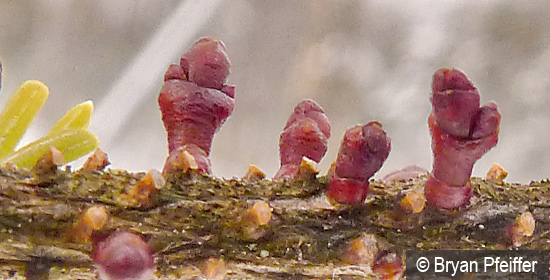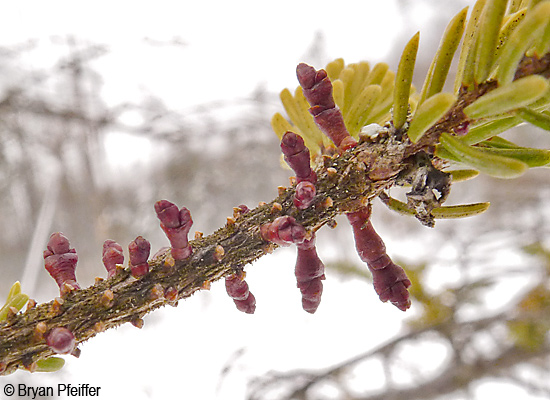What’s This? No. 6
 Our previous What’s This? challenge (Number 5) was much too easy. So I’m back at it a day later with a new one from a woodland spruce bog in Vermont on February 13, 2011. Name it and win $5 off any of my outings or workshops. (And I’m hatching another photography workshop for June in Montpelier). Submit your answers in the comments section below. If more than one of you gets it right, the first one in wins. I’ll post all the comments once I announce our winner. (Here are all the What’s This? challenges.)
Our previous What’s This? challenge (Number 5) was much too easy. So I’m back at it a day later with a new one from a woodland spruce bog in Vermont on February 13, 2011. Name it and win $5 off any of my outings or workshops. (And I’m hatching another photography workshop for June in Montpelier). Submit your answers in the comments section below. If more than one of you gets it right, the first one in wins. I’ll post all the comments once I announce our winner. (Here are all the What’s This? challenges.)
We have a winner: sharp-eyed naturalist Mark Des Meules identified this as Dwarf Mistletoe (Arceuthobium pusillum). (The wise Ann Lewis also got it, but Mark beat her to the punch; and Sara Backer receives her customary honorable mention for her creative submission below.) This is actually a shrub that grows on and parasitizes conifers – Black Spruce in this case. (I had a number of worthy replies to the contest suggesting these were buds on spruce or tamarack.) Dwarf Mistletoe spreads by means of a haustorium (plural haustoria), a root-like appendage that penetrates the tree tissue and draws its nutrients.
Reproduction is explosive. Flowers are either male or female (dioecious), each located on separate branches or separate trees. Pollen is spread in the wind or perhaps by birds. When a female flower is fertilized, it eventually develops a fruiting structure that’s locked and loaded. Like a cannon it fires a seed that might fly as far as 30 feet to land and germinate.
Projectile propagation of a parasitic plant. Gotta love it.


Could it be some kind of dwarf mistletoe?
Mistletoe
Ah, another gem from the creative mind of Sara Backer.
I believe you borrowed this photo from NASA because it shows how Martians have learned to clone living knee replacement parts for creatures that resemble miniature hippopotamuses.